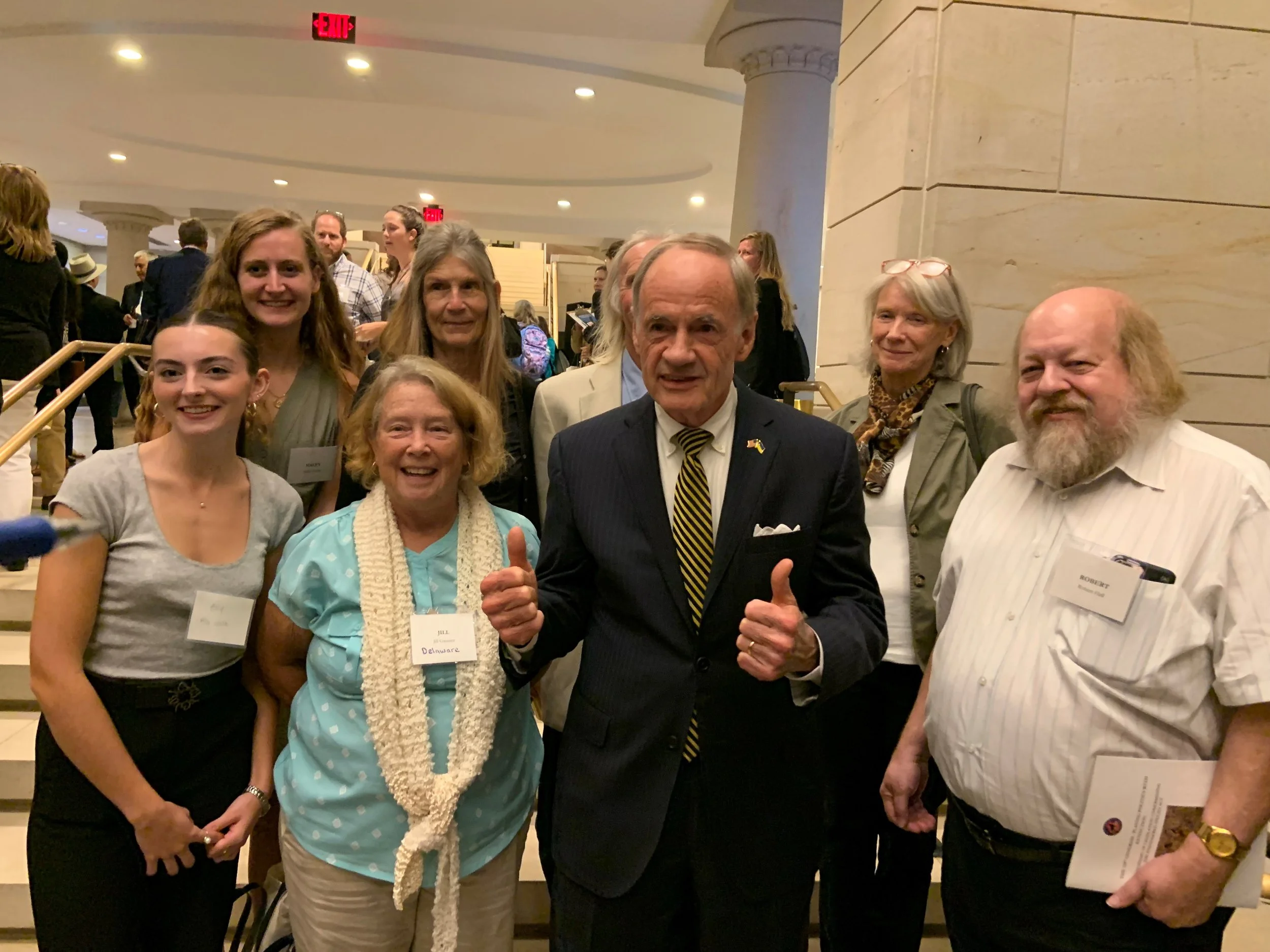Siddarth Sankar
Ellie M. and Aadhavan Rengapragash
In 2022, the Delaware Audubon Society initiated a new award to recognize young scientists (grades 6-12) who have demonstrated exceptional accomplishments in conservation and/or bird-related study. The awards are conferred upon students who complete science projects that align with the society’s mission of promoting species and habitat conservation, particularly those showing interest and promise in the study of birds (ornithology).
The “Red Knot Award of Excellence”, now in its third year, was named for a bird species that stops in Delaware each year on its spring migration, one of the longest migrations in the animal kingdom at more than 9,300 miles. The awards (first, second, and third place as well as an honorable mention) were granted to students who competed in the Delaware Valley Science Fair in Oaks, Pennsylvania on Wednesday, April 3rd.
Siddarth Sankar, a middle school student from Collegeville, Pennsylvania, earned the first-place award for his project “Window Pain: Science of Balancing Transparency and Mortality.” Siddarth invented a device to detect bird window strikes and alert homeowners so they can respond and take injured birds to a rehabilitation center for care. The awards committee was impressed by Siddarth’s attention to an important driver of avian mortality and ingenuity in devising a solution.
Second place was awarded to middle school student Ellie M. of Kennett Square, Pennsylvania, for her project “Does the Weather Affect Birds’ Foraging Patterns?”. Ellie observed birds at her backyard feeders, tallying and identifying them, while also keeping track of weather conditions, and found that birds, especially insectivorous species, were more active at feeders in times of cold, snowy weather compared to sunny, unseasonably warm weather. Natural history studies like this one form the backbone of ornithological research, providing important foundational data necessary for promoting avian conservation.
Middle school student Aadhavan Rengapragash of Mount Laurel, New Jersey earned the third-place Red Knot Award for his project “ShoreTech - A Novel Vision Based Approach to Prevent Plastic Pollution Using Object Detection.” Aadhavan’s invention uses object detection technology to recognize and gather plastic bottles on beaches to reduce the potential of harm to wildlife. The award committee was impressed by this sophisticated project’s potential for improving wildlife habitat along shorelines.
Tenth-grade student Erin L. of Newtown, Pennsylvania earned an honorable mention for her project “Impact of Different Lights on Light Pollution.” Light pollution is a serious issue affecting birds as it can disorient them and cause them to expend extra energy during migration, even leading to collisions. Erin investigated how size, shape, and position of outdoor lights affect light emission, highlighting how simple design elements can reduce light pollution.
The Red Knot Award of Excellence selection committee was impressed by the ingenuity of these projects and the students’ interest in birds, natural history, and serious conservation issues. Like the award’s namesake, these awardees have gone the “extra mile.” Each awardee was presented with a certificate, monetary award, and a gift membership to the National Audubon Society.
For students interested in competing for the 2025 Red Knot Awards, please email delawareaudubon@gmail.com for more information.
\









